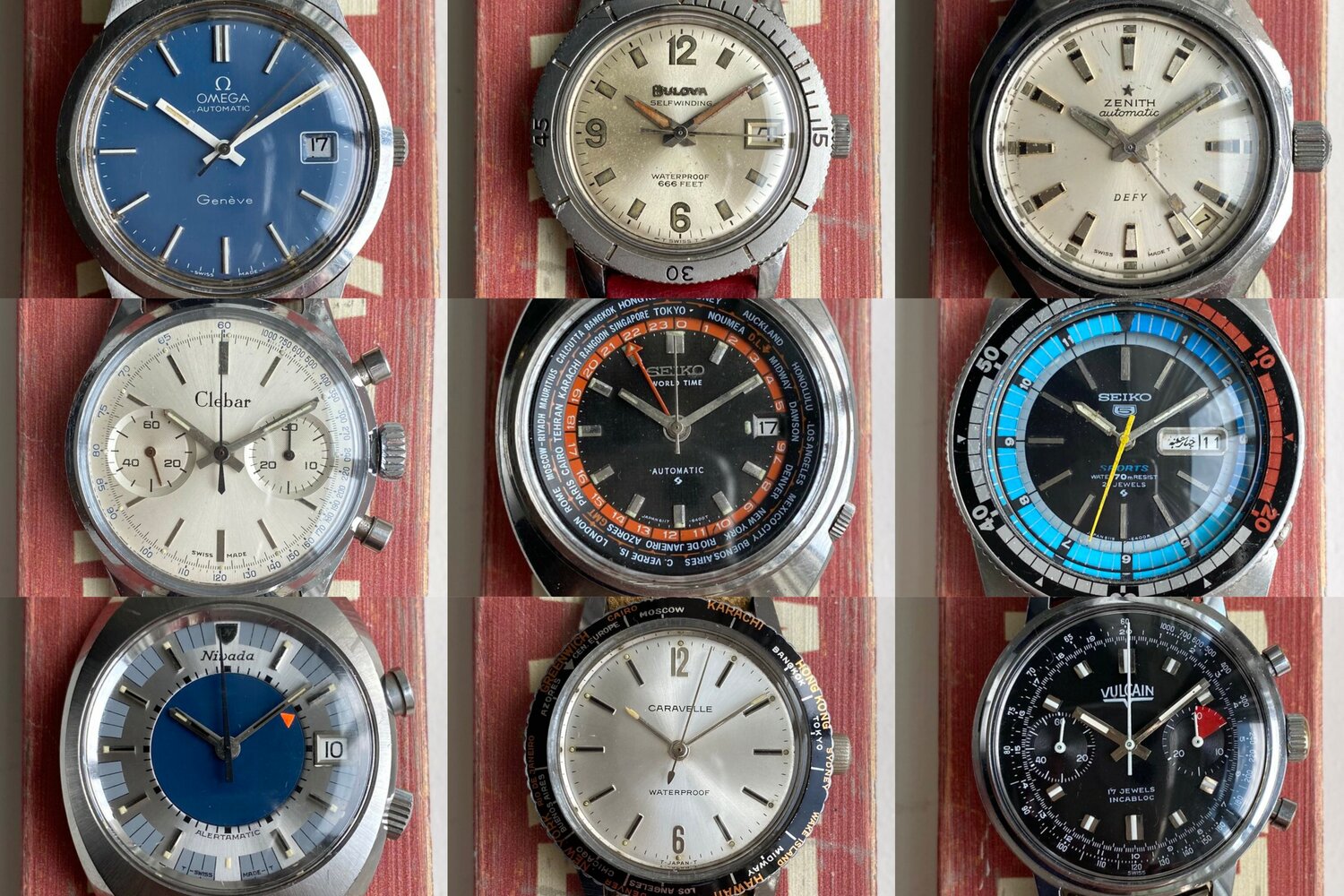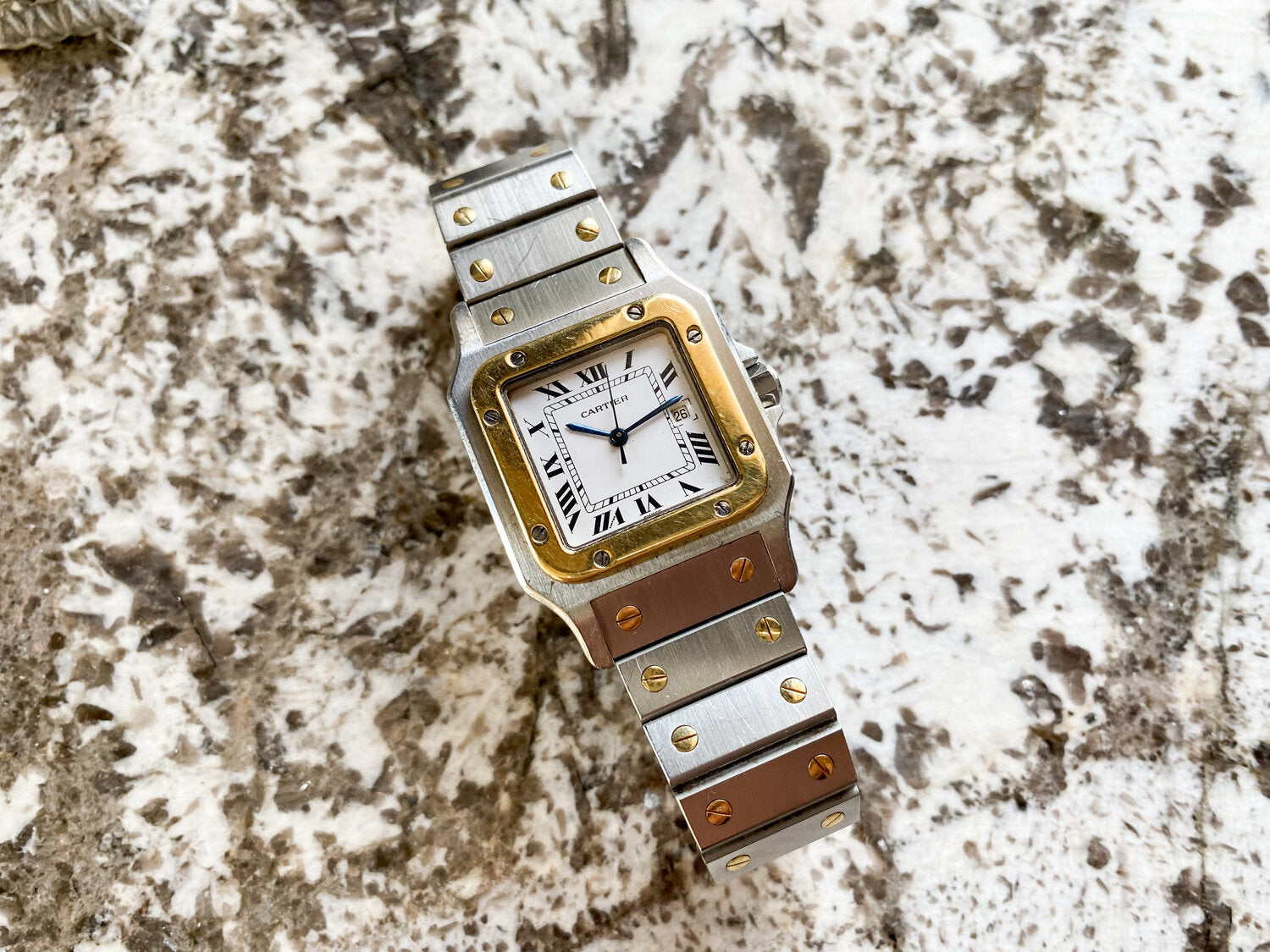A Crash Course On American Watch History
If you’re new to the watch world or just want to brush up, it’s always worth a look into the evolution of the American wristwatch.
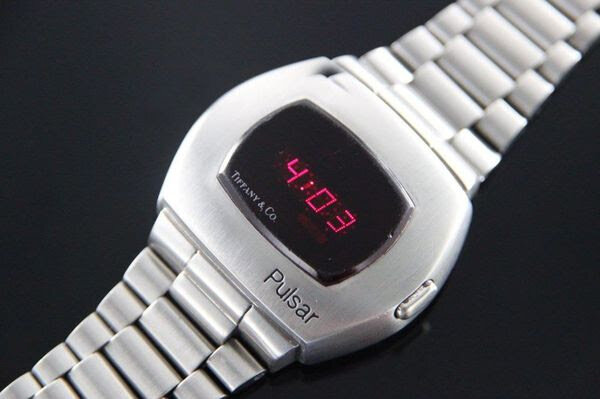
As collectors and vintage watch geeks, we tend to spend the vast majority of our time, money, and energy hyper-focused on a handful of Swiss brands. While those brands are renowned for good reason, as the vintage market expands collectors have begun to scour the globe in the search of the most interesting and most historically significant timepieces — many of which can be found right here in the USA.

Watches of the First World War
America is undeniably tied to the invention of the wristwatch, which makes it impossible to discuss American watches without first having a general understanding of the history of the wristwatch. Traditionally only women wore wristwatches, but when the first World War broke out in 1914, soldiers needed to be able to quickly tell time to fight in a war that required unprecedented coordination. The glory associated with the returning soldiers soon eclipsed any reservations about the femininity of wearing a ‘wristlet’ and manufacturers back home started not only making watches for the boys overseas, but for the domestic market as well.
American watchmakers such as Waltham, Ingersoll, and Elgin mass-produced trench watches to feed the growing market — which soon grew past trench watches, towards more delicate, beautiful pieces. Smaller dress watches achieved massive success as America’s Art Deco Period blossomed in the 1920s. While the general public embraced the idea of the wristwatch, more traditional designers from established pocket watch companies were concerned that the wristwatch was simply a passing fad.
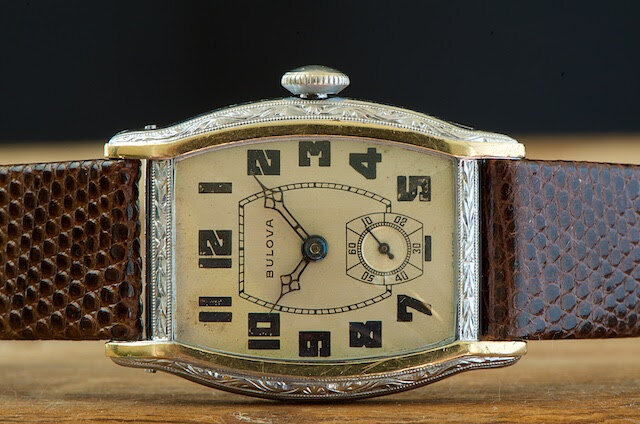
Humble Beginnings
An opportunity arose for young Czech immigrant, Joseph Bulova, who broke off from Tiffany and Co. to start his own watch company in 1875. Bulova rocketed to the forefront of American wristwatch manufacturing, and soon the watches became iconic. From Bonnie and Clyde to Frank Sinatra, everyone was wearing Bulova. The company quickly rose to the top of the American watch market, and for good reason — they had beautiful designs, innovative marketing, and accurate movements. Bulova was one of the first manufacturers to introduce more-accurate jeweled wristwatches to the public (as opposed to cheaper pin-lever movements) and by 1923 Bulova had perfected the standardization of parts across different models. With standardized movements, service was easy and the watches were well-maintained – today you can pick up excellent examples of their more popular Art Deco watches for well under $1000.
Watches on the Railroad
While Bulova cornered much of the gentleman’s dress watch market, a manufacturer by the name of Ball Watch Co. began producing watches to be used on the Railroad. Before the Railroad was built, individual towns would use different time zones – meaning that there were over 300 unique American time zones. As Railroads strung small towns and major cities together across America, the number of time zones became impossible to keep up with, resulting in four ‘Standard’ time zones.
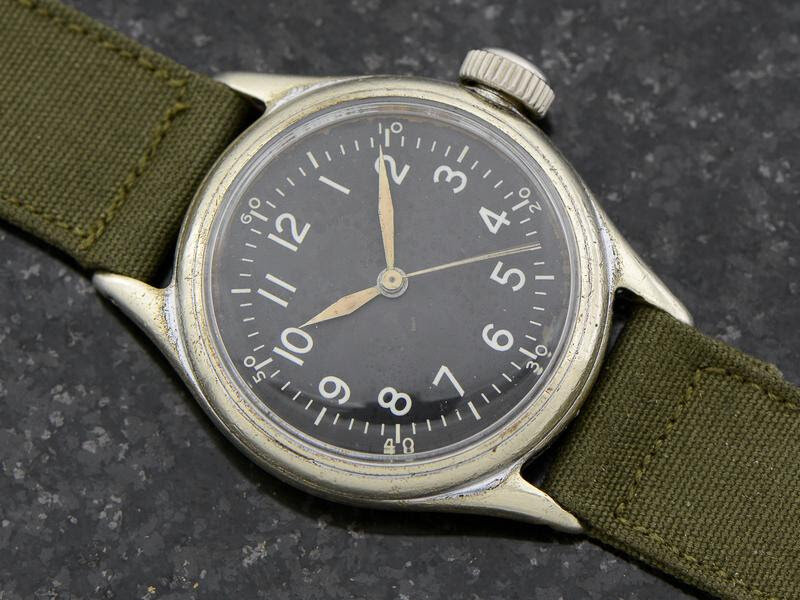
Watches of the Second World War
In the late 1930s and early 1940s, as the world braced itself for a second world war, the United States military opened a contract for a new, standard issue field watch. Waltham, Elgin, Bulova, and Hamilton supplied the troops with the A-11 — a simple, accurate, waterproof watch to be worn by U.S. Servicemen. The A-11 was not a particular watch, but rather a manufacturing standard that all of the U.S. military watches were held to. which had similar requirements to their European counterparts, the Dirty Dozen watches; a 15-Jewel hand winding movement, waterproof case, and legible white numerals on a black dial.
Vintage Wittnauer ads, courtesy of @lrfantiquewatches. Navigate to see more!
The Golden 50s
After the war, American citizens — fed up with rationing — were ready to spend their newfound wealth as America entered the Golden era of Capitalism. In the late 1950s, recreation activities like S.C.U.B.A diving and sailboat racing exploded in popularity, and in response American watch manufacturers began to supply the emerging sporting industries with dive watches and chronographs.
The dive watches often had rotating bezels, heavy lume, and sharp case lines that identified them as tool watches. Chronographs from American Watch houses came in many shapes, colors, and sizes — and although they are rapidly rising in value there are still deals to be found on colorful, sporty chronographs from highly collectible brands like Hamilton and Wittnauer. The loud colors and beefy cases of American chronographs of the 50s, 60s, and 70s make them appear more fun and casual than a more serious, dressy chronograph.
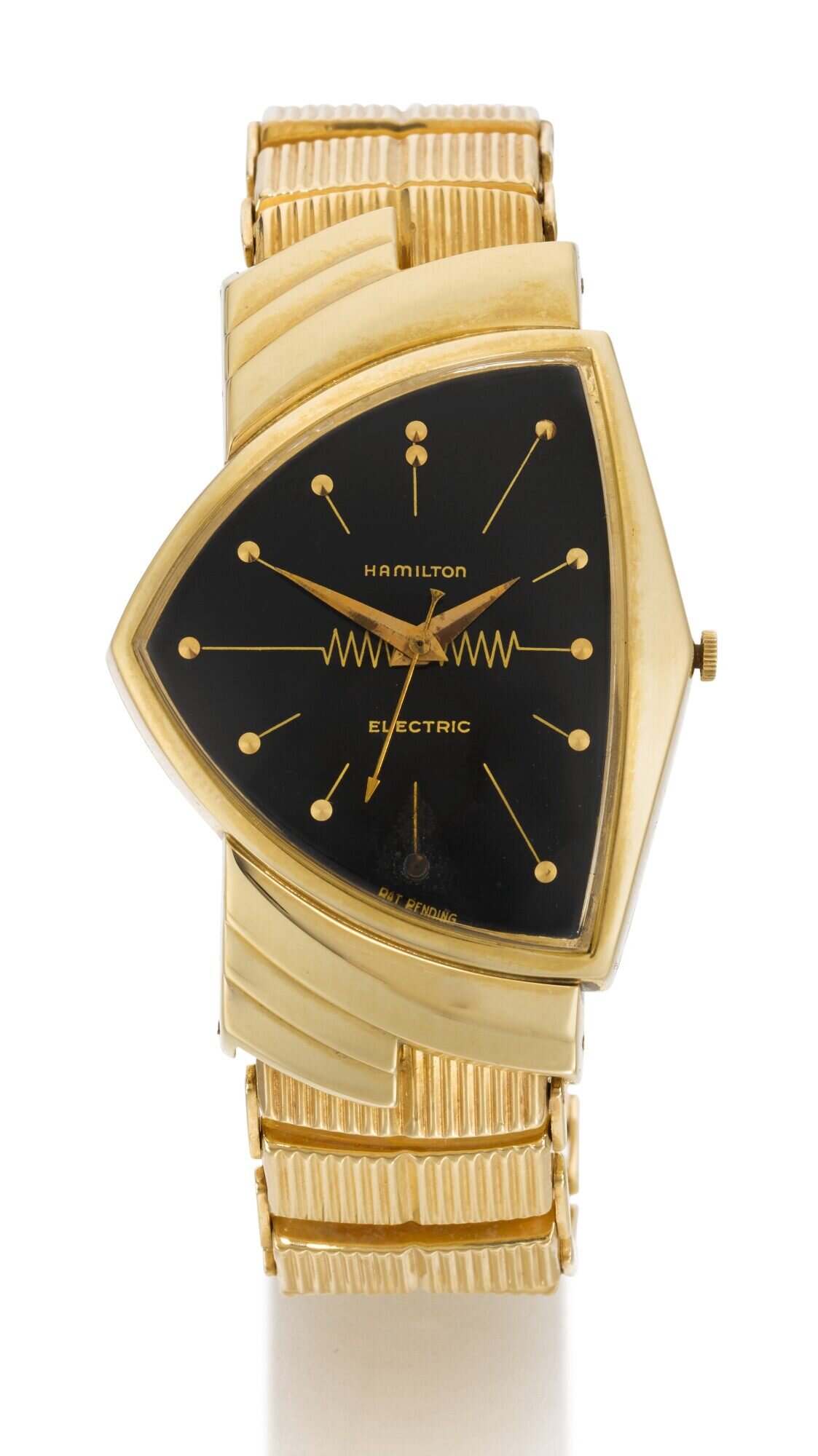
The Electric 60s
Influenced by rapid progression in space and nuclear technology, Americans looked to the stars and embraced the Atomic Age. Technological advances in both electronics and watchmaking allowed American companies to push the boundaries of accuracy with battery-powered movements. Hamilton and Bulova made the best examples of these electric wristwatches: the Ventura and the Accutron.
The Hamilton Ventura featured a radical new shield-shaped case design and boasted a new electronic movement that helped it gain publicity early in the 1960s. While the Ventura used battery power, it still relied upon a balance wheel to regulate the time between every tick of the second hand, so it did not make any significant leaps in precision.
Bulova’s Accutron, however, used a tuning fork that oscillated at nearly 100 times the speed of an average balance wheel– which delivered an unprecedented level of accuracy. The Accutron’s popularity was solidified by the revolutionary Spaceview marketing campaign. The Accutron Spaceview featured an openworked design that displays the movement, exposing the copper drive coils, green battery housing, and the iconic Accutron tuning fork. Initially, the Spaceview was intended simply as a selling point for Bulova salesmen to explain how the battery-powered mechanism worked - but it was so successful that Bulova began to sell the Spaceview watches to the public.
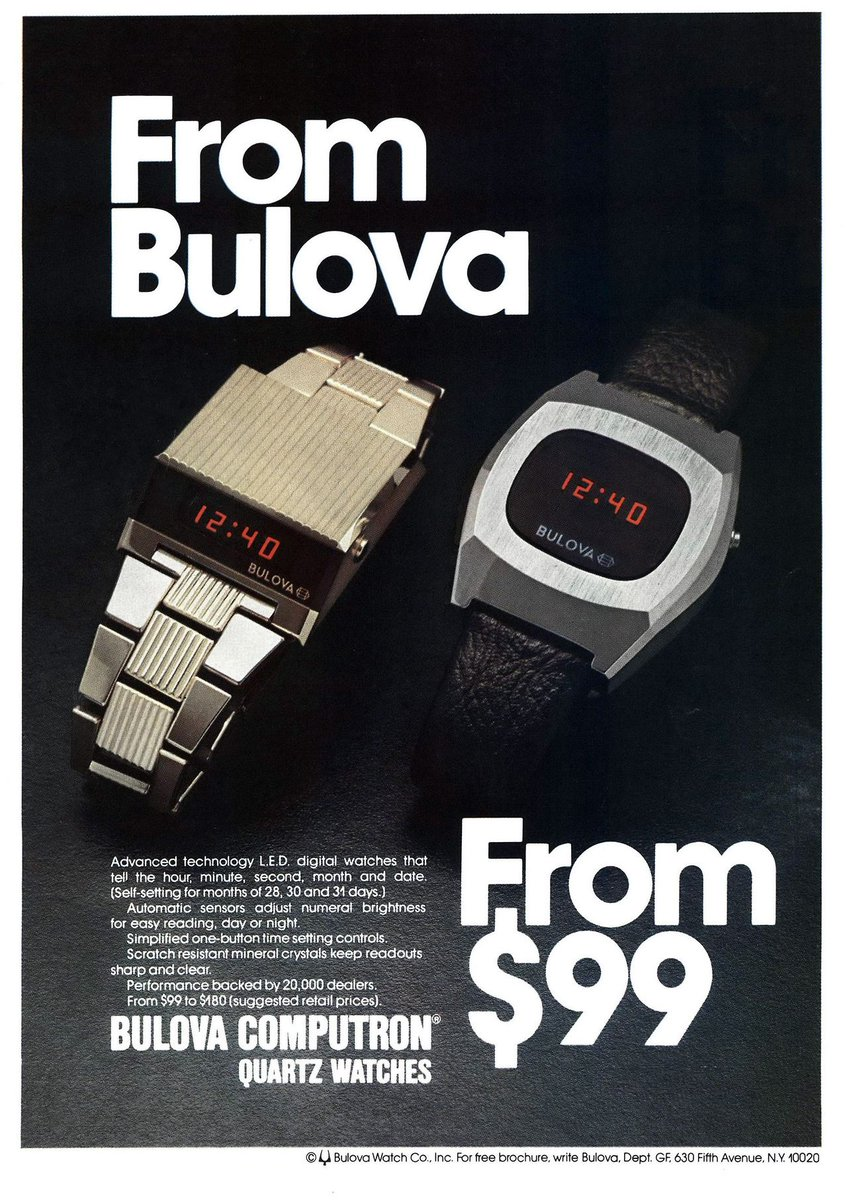
The Groovy 70s
After Seiko’s release of the first quartz-regulated movement in 1969, the entire watchmaking industry, including American brands, entered a dark period that any watch geek knows well: The Quartz crisis. As Quartz technology was developed it promised cheap, accurate, and easy-to-produce movements, which many brands turned to (and the many that didn’t would soon fail). Hamilton was able to innovate past simply adopting the quartz movement, and in 1970 they released the world’s first LED watch, the Pulsar. It was well received, although expensive, and soon became a symbol of the groovy 70s. Bulova answered the Pulsar with their own LED watch, the Computron. Both have avant-garde, futuristic, cases that appear to slowly bleed into the integrated bracelets, which still challenge the aesthetic norms of watchmaking to this day.
As America developed, so did the wristwatch. With every decade since the first men’s wristwatches were created, America has produced beautiful timepieces with extreme cultural and historical significance. From large to small, automatic to electric, there is a vintage American watch out there for every collector, and I encourage you to find yours.
Jon Tarquinio (@j_tarq) is a regular contributor from Nashville, who has a passion for wristwatches, vintage clothing, and classic cars. If you have a pitch for us, reach out through our Contact form or send it to @iamjoshcameron on Instagram.


